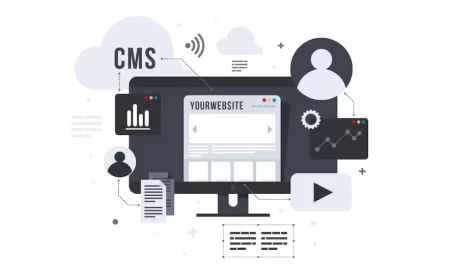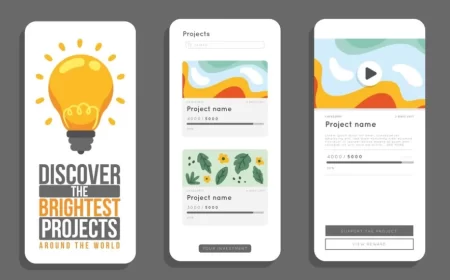In the intricate tapestry of modern business, Communications and Marketing are not merely departmental functions but the very lifeblood that connects an organization to its audience, stakeholders, and the broader world. While often used interchangeably or seen as distinct silos, these two disciplines are, in fact, deeply interconnected and mutually reinforcing. They form a powerful synergy, working in concert to build brand awareness, shape perception, drive engagement, foster loyalty, and ultimately, generate revenue.
At their core, both communications and marketing are about telling a story – the story of a brand, a product, a service, or an idea. They aim to influence attitudes, behaviors, and decisions. However, they approach this task from slightly different angles and with varying immediate objectives. Communications broadly encompasses all efforts to convey messages, build relationships, and manage reputation, both internally within an organization and externally with various publics. Marketing, on the other hand, is specifically focused on identifying, creating, communicating, delivering, and exchanging offerings that have value for customers, with the ultimate goal of driving sales and market share.
This comprehensive guide will delve deep into the multifaceted worlds of communications and marketing, exploring their individual definitions, core components, and strategic importance. We will then illuminate their profound interconnectedness, emphasizing how an integrated approach is not just beneficial but essential for achieving sustainable business success in today’s complex, noisy, and rapidly evolving global marketplace. We will examine key channels, strategic planning, emerging trends, and the critical role these functions play in navigating challenges and seizing opportunities.
Part 1: Understanding Communications – The Art of Connection and Reputation
Communications is the strategic process of conveying messages, building relationships, and managing perceptions with various audiences, both within and outside an organization. It is fundamentally about dialogue, understanding, and influence, aiming to foster trust, credibility, and a positive reputation.
1.1 Definition and Scope of Communications
Communications encompasses a broad spectrum of activities designed to inform, persuade, and engage. It’s about ensuring that the right message reaches the right audience at the right time through the most effective channels. Its scope extends beyond promotional activities to include reputation management, crisis response, and fostering internal alignment.
1.2 Internal Communications: Fostering a Cohesive Culture
Effective internal communication is the backbone of a healthy organization. It ensures that employees are informed, engaged, and aligned with the company’s vision, values, and goals.
- Employee Engagement: Keeping employees informed about company news, performance, and strategic direction. This fosters a sense of belonging and purpose.
- Culture Building: Reinforcing organizational values, mission, and desired behaviors. Internal communications shape the employee experience and company culture.
- Change Management: Communicating organizational changes (e.g., mergers, new policies, leadership shifts) transparently and empathetically to minimize resistance and ensure smooth transitions.
- Knowledge Sharing: Facilitating the flow of information and best practices across departments and teams.
- Crisis Preparedness: Ensuring employees are aware of crisis protocols and their role in maintaining stability and reputation during challenging times.
Key Tools for Internal Communications:
- Intranets and internal portals
- Company-wide emails and newsletters
- Town hall meetings and all-hands calls
- Collaboration platforms (Slack, Microsoft Teams)
- Employee surveys and feedback mechanisms
- Internal social media platforms
1.3 External Communications: Shaping Public Perception
External communications focuses on managing the organization’s image and relationships with external stakeholders, including customers, media, investors, government bodies, and the general public.
- Public Relations (PR) & Media Relations: Building and maintaining positive relationships with journalists, bloggers, and influencers to secure favorable media coverage. This often involves writing press releases, media kits, organizing press conferences, and managing media inquiries. The goal is earned media – coverage that is not paid for, lending it more credibility.
- Crisis Communications: Developing and executing strategies to manage and mitigate negative publicity or events. This involves rapid response, transparent messaging, and protecting the brand’s reputation during challenging times.
- Investor Relations (IR): Communicating with shareholders, analysts, and potential investors to provide financial information, strategic updates, and maintain investor confidence. This includes annual reports, quarterly earnings calls, and investor presentations.
- Public Affairs & Government Relations: Managing relationships with government officials, policymakers, and regulatory bodies. This involves advocating for the organization’s interests, monitoring legislation, and contributing to public policy discussions.
- Community Relations: Building positive relationships with the local communities where the organization operates, often through corporate social responsibility (CSR) initiatives, sponsorships, and local engagement.
- Thought Leadership: Positioning key executives or the organization as experts in their field through articles, speeches, webinars, and participation in industry discussions. This builds credibility and influence.
1.4 Principles of Effective Communications
Regardless of the audience or channel, certain principles are fundamental to effective communication:
- Clarity: Messages must be unambiguous, easy to understand, and free from jargon.
- Consistency: Messaging should be consistent across all channels and over time to build a strong, coherent brand narrative.
- Credibility: Communications must be truthful, accurate, and backed by evidence to build and maintain trust.
- Audience-Centricity: Messages should be tailored to the specific needs, interests, and preferred channels of the target audience.
- Relevance: Information should be pertinent and valuable to the recipient.
- Feedback & Listening: Effective communication is a two-way street. Organizations must actively listen to feedback and adapt their strategies accordingly.
- Transparency: Being open and honest, especially during challenging times, builds long-term trust.
Part 2: Understanding Marketing – Driving Value and Exchange
Marketing is the process of creating, communicating, delivering, and exchanging offerings that have value for customers, clients, partners, and society at large. It’s about understanding market needs, developing compelling solutions, and making them accessible and attractive to the target audience, ultimately leading to profitable exchanges.
2.1 Definition and Scope of Marketing
Marketing is a strategic business function that identifies and anticipates customer needs, then creates, promotes, and distributes products or services to satisfy those needs, profitably. Its scope extends from initial market research and product development to pricing, distribution, and promotional activities.
2.2 The Marketing Mix (The 4 Ps)
The traditional “4 Ps” of marketing provide a foundational framework for developing a comprehensive marketing strategy:
- Product: What is being offered to the market? This includes not just the physical good or service, but also its features, quality, branding, packaging, and associated services (e.g., warranty, customer support). It’s about creating something that truly solves a customer problem or fulfills a desire.
- Price: How much does the customer pay? This involves setting pricing strategies (e.g., competitive pricing, value-based pricing, penetration pricing, skimming), discounts, payment terms, and credit policies. Price must reflect value and be competitive.
- Place (Distribution): How does the product reach the customer? This covers distribution channels (e.g., retail stores, online, direct sales, wholesalers), logistics, inventory management, and accessibility. It’s about making the product available where and when the customer wants it.
- Promotion: How are customers informed and persuaded to buy? This encompasses all communication activities designed to inform, persuade, and remind the target market about the product or brand. This is where the lines between marketing and communications often blur, as promotional activities heavily rely on communication strategies.
2.3 Key Marketing Activities
- Market Research: Gathering and analyzing data about target markets, competitors, and industry trends to identify opportunities and challenges. This includes understanding customer demographics, psychographics, needs, and buying behaviors.
- Market Segmentation: Dividing a broad target market into smaller, more defined segments based on shared characteristics (e.g., age, income, interests, location).
- Targeting: Selecting the most attractive market segments to focus marketing efforts on.
- Positioning: Creating a distinct image and value proposition for the product or brand in the minds of the target audience, differentiating it from competitors.
- Brand Management: Developing, maintaining, and enhancing the brand’s identity, image, and reputation over time. This involves defining brand values, voice, and visual elements.
- Product Development: Designing and launching new products or improving existing ones based on market needs and opportunities.
- Customer Relationship Management (CRM): Strategies and technologies used to manage and analyze customer interactions and data throughout the customer lifecycle, with the goal of improving business relationships with customers, assisting in customer retention, and driving sales growth.
- Sales Enablement: Providing the sales team with the content, tools, and training they need to sell more effectively.
Part 3: The Indispensable Synergy – Integrated Communications and Marketing
While communications and marketing have distinct focuses, their true power is unleashed when they operate as a unified, strategic force. This integrated approach is known as Integrated Marketing Communications (IMC).
3.1 What is Integrated Marketing Communications (IMC)?
IMC is a strategic process that involves coordinating and integrating all communication channels (both marketing and non-marketing) to deliver a clear, consistent, compelling, and cohesive message about a company and its products. It ensures that all brand touchpoints – from advertising and PR to social media, customer service, and internal messaging – work together harmoniously to reinforce the same brand story and achieve shared objectives.
3.2 How Communications Supports Marketing
Communications plays a vital role in setting the stage for marketing success:
- Building Brand Reputation & Trust: Strong PR and external communications build credibility and trust, making marketing messages more believable and impactful. A positive brand reputation makes it easier to attract customers.
- Establishing Thought Leadership: Positioning the company and its leaders as experts through strategic communications (articles, speeches, media interviews) creates authority, which lends weight to marketing claims.
- Crisis Mitigation: Effective crisis communications can protect the brand during challenging times, preventing reputational damage that could derail marketing campaigns and sales efforts.
- Internal Alignment: Well-informed and engaged employees (via internal communications) become brand ambassadors, naturally promoting the company’s values and offerings, which supports external marketing efforts.
- Media Amplification: PR efforts can secure earned media coverage that amplifies marketing campaigns far beyond what paid advertising alone could achieve, often at a fraction of the cost and with higher credibility.
3.3 How Marketing Informs Communications
Marketing provides crucial insights and direction for communications efforts:
- Audience Insights: Market research identifies target audience demographics, psychographics, needs, and pain points, informing communications on how to best resonate with different segments.
- Messaging Development: Marketing defines the core value propositions and key messages for products/services, which communications then adapts and disseminates across various channels.
- Campaign Goals: Marketing sets specific goals (e.g., lead generation, sales targets, market share increase) that communications then supports by building awareness, generating buzz, and managing perception.
- Competitive Landscape: Marketing analysis identifies competitors’ strengths and weaknesses, informing communications on how to differentiate the brand’s narrative.
- Product/Service Understanding: Marketing’s deep understanding of the product features and benefits allows communications to translate these into compelling stories for different publics.
3.4 Examples of Synergy in Action
- Product Launch:
- Marketing: Develops product features, pricing, target audience, and sales goals. Creates advertising campaigns, digital ads, and sales collateral.
- Communications: Crafts press releases, organizes media briefings, secures product reviews, prepares spokespeople, and manages internal announcements to align employees.
- Synergy: PR generates buzz and credibility before and during the launch, making marketing efforts more effective. Internal comms ensures employees are excited and knowledgeable, becoming advocates.
- Crisis Management (e.g., Product Recall):
- Communications: Develops official statements, manages media inquiries, communicates with affected customers, and addresses public concerns transparently.
- Marketing: Pauses or adjusts ongoing campaigns, reassures customers about brand commitment, and potentially develops new messaging to rebuild trust.
- Synergy: Rapid, honest communications minimize reputational damage, allowing marketing to resume efforts to rebuild brand loyalty once the crisis subsides.
- Thought Leadership Campaign:
- Marketing: Identifies key industry trends and the company’s unique perspective.
- Communications: Pitches executives for speaking engagements, writes op-eds, secures interviews, and promotes content on social media.
- Synergy: Elevated reputation and credibility (communications) make the company’s marketing messages more authoritative and persuasive.
Part 4: Key Channels and Tools in the Modern Landscape
The digital revolution has dramatically expanded the channels available for communications and marketing. A successful strategy employs a mix of traditional and digital approaches, tailored to the audience and objectives.
4.1 Digital Marketing Channels
Digital marketing leverages online channels to reach target audiences.
- Content Marketing: Creating and distributing valuable, relevant, and consistent content to attract and retain a clearly defined audience—and, ultimately, to drive profitable customer action.
- Tools: Blogs, articles, e-books, whitepapers, case studies, infographics, videos, podcasts, webinars.
- Platforms: Company blog, YouTube, Vimeo, podcast platforms, SlideShare.
- Search Engine Optimization (SEO): Optimizing website content and technical aspects to rank higher in search engine results pages (SERPs) for relevant keywords, driving organic (unpaid) traffic.
- Tools: Google Analytics, Google Search Console, SEMrush, Ahrefs, Moz.
- Search Engine Marketing (SEM) / Pay-Per-Click (PPC): Paid advertising that appears on SERPs (e.g., Google Ads, Bing Ads). Advertisers bid on keywords, and pay each time their ad is clicked.
- Tools: Google Ads, Bing Ads, keyword research tools.
- Social Media Marketing: Using social media platforms (Facebook, Instagram, LinkedIn, Twitter/X, TikTok, YouTube, Pinterest, etc.) to connect with audiences, build brand awareness, drive traffic, and generate leads.
- Organic Social: Building a community, sharing content, engaging with followers.
- Paid Social: Running targeted advertisements on social platforms.
- Tools: Hootsuite, Sprout Social, Buffer, social media analytics.
- Email Marketing: Sending targeted messages to a list of subscribers to build relationships, promote products, share content, and drive conversions.
- Tools: Mailchimp, HubSpot, Constant Contact, ActiveCampaign, SendGrid.
- Influencer Marketing: Collaborating with individuals who have a significant following and credibility in a specific niche to promote products or services.
- Tools: Influencer platforms, social listening tools.
- Affiliate Marketing: Partnering with affiliates who promote products and earn a commission on sales generated through their referrals.
- Tools: Affiliate networks (ShareASale, Awin), tracking software.
- Website & Landing Pages: The central hub of digital presence. Websites provide comprehensive information, while landing pages are designed for specific campaign goals (e.g., lead capture, product launch).
- Tools: Webflow, WordPress, Squarespace, HubSpot CMS, Unbounce.
- Digital Analytics: Tracking, measuring, and analyzing digital marketing performance to understand user behavior, optimize campaigns, and demonstrate ROI.
- Tools: Google Analytics (GA4), Google Tag Manager, Adobe Analytics, heat mapping tools (Hotjar, Microsoft Clarity).
4.2 Traditional Marketing & Communications Channels
While digital dominates, traditional channels still hold significant value, especially for certain industries or demographics.
- Public Relations (PR) & Media Relations: (As discussed above) Focus on earned media through traditional outlets like newspapers, magazines, TV, and radio.
- Advertising (Traditional): Paid promotional messages delivered through mass media.
- Channels: Television, radio, print (newspapers, magazines), Out-of-Home (OOH) billboards, direct mail.
- Direct Mail: Sending physical mail (brochures, catalogs, letters) directly to target consumers.
- Events & Sponsorships: Participating in or sponsoring industry events, trade shows, conferences, or community events to build brand visibility, network, and generate leads.
4.3 Internal Communications Tools
- Intranets & Internal Portals: Centralized platforms for company news, policies, documents, and employee resources.
- Company Newsletters: Regular updates on company performance, employee achievements, and strategic initiatives.
- Town Halls & All-Hands Meetings: Opportunities for leadership to communicate directly with employees and foster a sense of community.
- Collaboration Platforms: Tools like Slack, Microsoft Teams, and Google Workspace facilitate real-time communication and project collaboration.
- Employee Advocacy Platforms: Tools that encourage employees to share company news and content on their personal social media.
Part 5: Strategic Planning for Communications and Marketing
Effective communications and marketing don’t happen by accident. They require meticulous planning, execution, and continuous optimization.
-
Define Objectives (SMART Goals):
- What do you want to achieve? (e.g., increase brand awareness by 20%, generate 500 leads per month, improve customer satisfaction by 15%).
- Goals should be Specific, Measurable, Achievable, Relevant, and Time-bound.
-
Conduct Audience Analysis:
- Who are you trying to reach? Create detailed buyer personas (for marketing) and stakeholder maps (for communications).
- Understand their demographics, psychographics, needs, pain points, motivations, and preferred communication channels.
-
Develop Core Messaging & Value Proposition:
- What is your unique selling proposition (USP)? What problem do you solve?
- Craft clear, consistent, and compelling messages that resonate with your target audiences and differentiate you from competitors.
- Define your brand voice and tone.
-
Select Channels & Tactics:
- Based on your objectives and audience analysis, choose the most effective mix of digital and traditional channels.
- Determine specific tactics for each channel (e.g., for social media: daily posts, weekly live Q&A, monthly paid ad campaign).
-
Allocate Budget & Resources:
- Determine how much you will invest in each channel and tactic.
- Allocate human resources (internal team, external agencies, freelancers).
-
Create a Content Calendar:
- Plan what content will be created, for which channels, and when. This ensures consistency and relevance.
-
Establish Measurement & KPIs:
- How will you track progress towards your objectives?
- Define Key Performance Indicators (KPIs) for each goal (e.g., website traffic, conversion rate, social media engagement, media mentions, employee survey scores).
- Implement analytics tools to collect data.
-
Execute, Monitor, & Optimize:
- Launch campaigns and communications initiatives.
- Continuously monitor performance against KPIs.
- Analyze data to identify what’s working and what’s not.
- Iterate and optimize strategies based on insights. This is an ongoing, cyclical process.
Part 6: Challenges and Future Trends
The landscape of communications and marketing is constantly evolving, presenting both challenges and exciting opportunities.
6.1 Current Challenges
- Digital Noise & Attention Economy: Audiences are bombarded with information, making it harder to cut through the clutter and capture attention.
- Data Privacy Concerns: Increasing regulations (GDPR, CCPA) and consumer awareness require careful handling of personal data, impacting targeting and personalization.
- Ad Blocking & Ad Fatigue: Users are increasingly blocking ads or becoming desensitized to them, reducing the effectiveness of traditional digital advertising.
- Trust & Authenticity: Consumers are skeptical of traditional marketing. They seek authenticity, transparency, and genuine connections with brands.
- Measuring ROI: Clearly demonstrating the return on investment for communications and marketing efforts can be complex, especially for brand-building activities.
- Talent Gap: The rapid evolution of digital tools and strategies creates a constant demand for new skills and expertise.
6.2 Future Trends
- Artificial Intelligence (AI) & Machine Learning (ML):
- Content Creation: AI-powered tools for generating copy, images, and even video drafts.
- Personalization: Hyper-personalization of content and experiences at scale.
- Data Analysis: More sophisticated analysis of vast datasets to uncover insights and predict trends.
- Automation: Automating routine tasks in marketing and communications (e.g., email sequences, social media scheduling, chat bots).
- Hyper-Personalization & Customer Experience (CX): Moving beyond basic personalization to deliver highly relevant, individualized experiences across all touchpoints, driven by data and AI.
- Authenticity, Transparency, & Purpose-Driven Marketing: Consumers increasingly expect brands to stand for something beyond profit. ESG (Environmental, Social, Governance) initiatives and authentic brand storytelling will be paramount.
- Video Content Dominance: Short-form video (TikTok, Reels, YouTube Shorts) continues to grow, demanding engaging, concise visual narratives. Long-form video for in-depth content also remains strong.
- Interactive Content: Quizzes, polls, calculators, interactive infographics, and AR/VR experiences for deeper engagement.
- First-Party Data Strategy: With third-party cookies phasing out, brands will increasingly focus on collecting and leveraging their own customer data.
- Community Building: Fostering strong, engaged online communities around a brand or topic, moving beyond simple follower counts.
- Voice Search Optimization: Optimizing content for natural language queries used in voice assistants.
- Hybrid Events & Experiences: Blending physical and virtual elements for events, product launches, and customer interactions.
- Sustainability & Ethical Practices: Brands will be increasingly scrutinized for their environmental and social impact, requiring transparent communication about their efforts.
Conclusion: The Unified Path to Digital Leadership
In conclusion, Communications and Marketing are inextricably linked, forming the dual engines of modern business growth and reputation management. While marketing focuses on driving value and exchange for customers, communications builds the foundational trust, credibility, and relationships necessary for those exchanges to flourish.
An integrated approach, underpinned by a clear understanding of objectives, audience, and channels, is no longer a competitive advantage but a strategic imperative. Organizations that effectively synchronize their communications and marketing efforts – ensuring every message, every touchpoint, and every interaction reinforces a consistent brand narrative – will be best positioned to cut through the digital noise, build lasting relationships, navigate crises, and achieve sustainable success in an ever-changing world. The future belongs to those who can communicate their value authentically and market their offerings strategically, with empathy and precision, across all dimensions of their audience’s journey.












